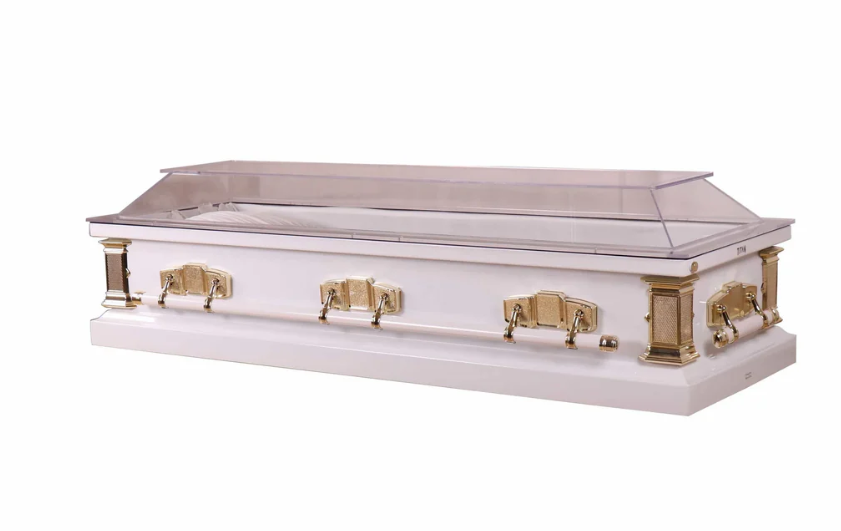In the quiet after a loss, even small decisions can feel overwhelming—especially the final choice of how to say goodbye. Among the most personal is selecting a casket or a coffin—an act that blends emotional weight with cultural, spiritual, and financial considerations. The physical design and materials used in these burial containers carry deep symbolic meaning, shaping how loved ones are remembered and honored.
This choice can lead to emotional tension, especially when family members have different values or expectations. Cultural traditions, personal beliefs, and cost can all influence the direction of the conversation. Clarity comes not from rushing the process, but from thoughtful reflection that allows space for grief, love, and legacy to guide the farewell.
Shape, Symbolism, and the Emotional Impact of Coffins
A tapered shape is often seen as meaningful during times of grief. This form mimics the human body, creating a sense of closeness that can ease the pain of loss. The shape serves both practical and symbolic roles, with coffins offering a gentle embrace that reflects the love and dignity shared in life. Traditionally, they are tied to heartfelt goodbyes, appealing to those who value sincere and emotional farewells.
Choosing a final resting vessel often connects to family values. A simple design might reflect a straightforward way of mourning, staying true to beliefs about honoring someone without extravagance. When tradition is important, the form can reinforce a heritage the family wishes to preserve. Discussing design preferences can help clarify emotional connections, guiding loved ones toward a choice that reflects their shared memories.
Materials and Meaning: Weighing Emotional and Financial Priorities
The material used for a casket or coffin shapes not only its appearance but also what it symbolizes and how much it costs. Metal options tend to be sturdy and polished, often chosen for their sense of permanence and refinement. Such features often appeal to families drawn to a sleek, modern tribute.
Softwood, on the other hand, offers a more natural and unassuming appearance. It may evoke warmth, simplicity, and a quiet return to nature. The decision between metal and wood often reflects personal values—how a loved one lived and how they might wish to be remembered.
Practical Considerations: Materials, Costs, and Constraints
Logistics play a big part in burial choices, especially when religion is involved. Many faiths have specific rules about what kind of coffin should be used. For example, some require wooden coffins to represent returning to the earth, while others favor detailed designs as a form of respect. Understanding religious requirements can help families avoid complications while honoring their beliefs.
Location also matters. Cemeteries often have guidelines regarding acceptable coffin types. Practical constraints like this can prompt honest conversations about how to balance spiritual traditions with financial realities. Reviewing local regulations and considering cultural expectations can lead to a more thoughtful and appropriate decision.
What Most Families Regret About Burial Purchases
Grief often leads families to make fast decisions under emotional strain. A rushed choice can result in overspending or selecting something that doesn’t feel right over time. Regret may surface when financial pressure follows or when the burial container no longer reflects the person being remembered. Slowing down, even briefly, can create room for reflection and more thoughtful decisions—ones that feel grounded rather than reactive.
Another regret is not knowing what the deceased wanted. If these things weren’t discussed ahead of time, families may struggle with uncertainty. Talking openly beforehand can help everyone feel more at peace with the final choice. It also brings the family together to create a tribute that truly reflects the person’s life.
Comparing In-Person and Online Purchasing Options Without Bias
Families now have more options when choosing burial items. Online retailers offer convenience, a wide range of styles, and the ability to compare prices from home. For those with time constraints or limited local access, this can be a practical path. Still, distance from the physical product may create hesitation, especially when the decision carries emotional weight.
Showrooms provide a more tactile experience. Being able to see and touch materials can bring clarity, and in-person guidance may offer emotional support that digital browsing cannot. Weighing both paths allows families to find a balance between practicality and the need for connection.
Funerals bring both emotional and financial challenges, but meaningful choices can lighten the load. Online platforms, life insurance advances, and community support offer real help without taking away meaning. Small steps—like talking about wishes in advance, comparing prices, or reaching out for assistance—can lead to decisions that feel both respectful and manageable. A heartfelt farewell doesn’t have to be costly or elaborate to feel right. What matters is honoring a life with care, truth, and love. Planning with intention creates space to grieve fully and remember deeply, allowing families to move forward with comfort and lasting connection.









